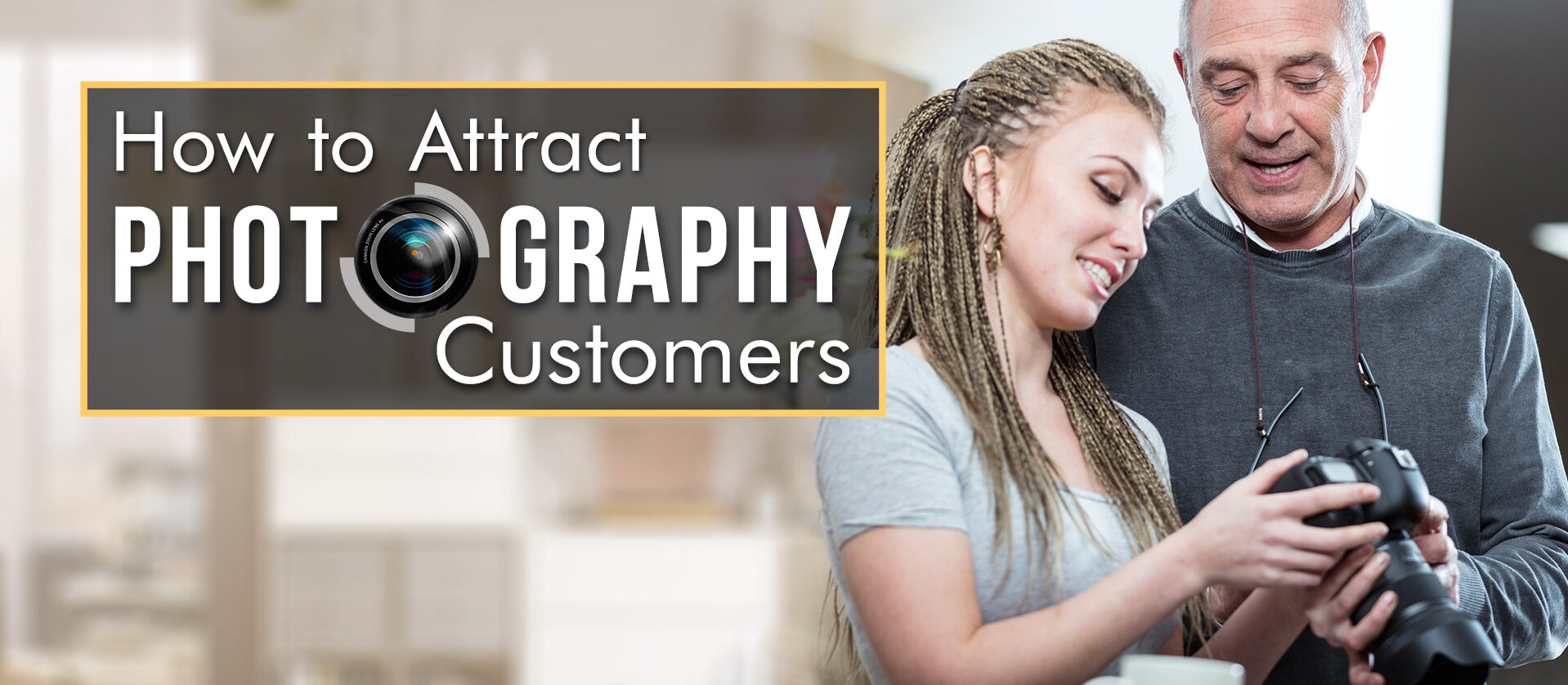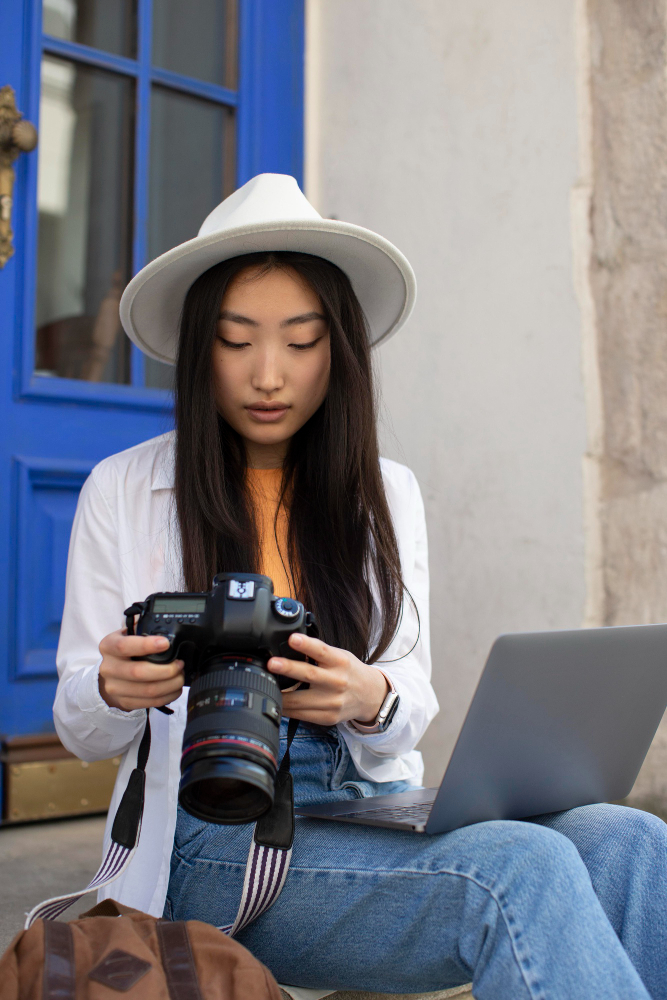 You may be wondering why a photographer might need to know something about makeup. After all, shouldn’t this be left to the person hiring your photographic services? Actually, a little makeup knowledge is something every photographer needs. This is true whether you’re shooting a professional model, or the family next door. The reason for this is that makeup and photography are two parts of one process: the creation of a beautiful image.
You may be wondering why a photographer might need to know something about makeup. After all, shouldn’t this be left to the person hiring your photographic services? Actually, a little makeup knowledge is something every photographer needs. This is true whether you’re shooting a professional model, or the family next door. The reason for this is that makeup and photography are two parts of one process: the creation of a beautiful image.
It is true that makeup and photography can compensate for each other. For instance, facial blemishes can be removed later with photo editing software. Careful choice in makeup colors can offset lack of light by accenting facial features. However, the best images are made when the two sides complement, rather than correct for, one another.
Modeling takes much more than just sitting still while others shoot the picture. A demanding business, the modeling world judges its professionals both in terms of their actions and their appearances. A lot of work goes into achieving the best possible look. This look is not something static or fixed. Depending on the situation, the desired look could be dignified, introspective, playful, or sexy. The look could also be representative of a particular character that the model is meant to play. Not all of this is achieved by makeup, but it is one of the tools that can be used.
Photography is an honest, blunt medium. It captures all aspects of the scene, both good and bad. Because no two-dimensional photograph can adequately replicate the three-dimensional world we live in, some objects look very different in photographs. his may have the effect of adding weight to a person in the picture, or accidentally highlighting some imperfection in the face that would not normally be noticed. It falls to the photographer to remove these fine points and accentuate the attractive features of your subject. To accomplish this task, makeup is used along with lighting, clothing, and post-exposure processing. The digital photographer, along with other image designers like hairdressers and makeup artists, can best achieve this by first being able to identify the problematic areas and the flattering aspects of the subject and scene.
The Goals of Makeup
Let’s see how to use makeup to enhance the effect you’re going for in your picture. Makeup can be used to improve a subject’s appearance, to establish a character, or to make full use of your lighting.
Most of your models, especially women, will want to wear makeup to improve their appearance. The concept of “improvement” has nothing to do with the natural attractiveness of a person; every person has small blemishes or a facial feature they don’t really like. Makeup can magically remove some of these perceived “problems” and can also highlight the pleasing features. Men may be more resistant to the idea of wearing makeup. Emphasize to them that just a little makeup can have a very pleasing effect. Good makeup for most photographs is subtle and virtually unnoticeable. The viewer should notice the subject, not what’s on their skin. (This is one of the reasons for removing blemishes.)
For more artistic purposes, makeup can be used to change appearances to create a certain character. This could be a very extreme transformation (think Halloween makeup!) or it could be quite subtle. Is the person trying to look younger? Older? Is a mature, responsible air being put on, or a casual carefree attitude? All of these characters call for certain makeup styles.
Now where does the photographer come in? Unless you are using a professional model you can’t trust that your subject will have the knowledge about makeup for photography that they need. Of course, professional models will know how to do their own makeup. For a large or important project you may consider hiring a professional makeup artist to achieve a degree of quality and consistency. For most amateur and small photography projects, however, it is usually left up to the model, who may or may not be experienced with makeup application. People often think that because they regularly apply makeup in their daily lives, they know everything they need to get ready for the photograph. However, there are certain techniques used specifically for digital and film photography, and the photographer would do well to be armed with this knowledge.
Achieving the Look: How to Apply the Makeup
First, some general tips. A healthy model is the best subject to shoot. Being well rested and well hydrated is far superior to applying layer after layer of makeup. Be sure to convey this to your customers beforehand; let them know to drink plenty of water and get some sleep. Healthy, natural-looking skin and clear eyes open themselves up for more different styles of makeup.
Makeup is not the only secret for a model to perfect a look. Another, more subtle enhancement is that of confidence. If a model is convinced of their appearance and character, the photographic result will be all the more convincing. This confidence is expressed in the way the model chooses to hold the head, his or her posture, facial expression, and position. This persona can be enhanced by the right choice of clothing and makeup. Make sure your customer or model feels comfortable with the scene so that this feeling of assurance and confidence will come through in your photograph. This is yet another selling point of makeup; models who have applied makeup are more likely to feel confident in their appearances.
Now, some specific pointers on makeup application. Start by preparing the face. Wash the skin well and apply toner and moisturizer. From this first step on, it is important to keep in mind that shine is the enemy. In the bright lights of the photographic setting, any shine on the face will be enhanced and will make the skin look greasy. To this end, use products that are not oil-based.
Next, eliminate blemishes. Use a generous amount of concealer two shades lighter than the natural skin. Then apply a thick layer of foundation, more than you would use in day-to-day casual makeup. Use enough to completely cover the blemishes. Apply this evenly over the entire face and blend it into the neck so that the shades seamlessly blend into each other. Follow the foundation with a healthy dose of powder, one of your best weapons against shine. This will give your skin an even, matte appearance. Make sure to reapply powder throughout the photography session.
Now you’re ready for the defining features, the eyes and lips. Unless you intend to draw attention to the makeup, don’t go overboard here. We want to enhance the natural beauty of these features, not draw new ones on! Use a lipstick that is a little darker than the natural lip color. Line the lips with a lipliner in the same shade.
Use a light shadow above the eyes, but stay away from makeup that has sparkle and shimmer. Again, we want to avoid shine. Make the eyeliner thin and precise and use mascara that is durable and waterproof so that it lasts the entire session. A generous coating of mascara will enhance and highlight the eyes.
If you’re reading this article because you have your own business or you’re about to open one, you should also read these two guides; one is about opening a profitable photography business, the other is about getting the best and most favorable poses from your models and it’s a must because photos are often selected because of relevant and eye catching poses.

